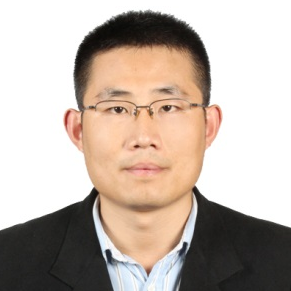New Developments in Nanomaterials for Energy Storage and Conversions
A special issue of Nanomaterials (ISSN 2079-4991).
Deadline for manuscript submissions: closed (31 August 2017) | Viewed by 37173
Special Issue Editors
Interests: materials chemistry; electrochemistry and electroanalysis; functional carbon based materials; porous materials(marco-, meso-, micro-); Li/Na/Al ion batteries; Li/Na air batteries; Li-S batteries; supercapacitors.
Interests: materials chemistry; electrochemistry and electroanalysis; functional carbon based materials; porous materials(marco-, meso-, micro-); Li/Na/Al ion batteries; supercapacitors
Special Issue Information
Dear Colleagues,
With the fast development of modern society, global energy demand is dramatically increasing to power millions of electronic devices and electric vehicles. Fossil fuels should be gradually substituted by renewable energy sources due to severe environmental pollution. Tremendous efforts have been devoted to developing novel materials for energy-related rechargeable systems, including lithium/sodium ion batteries, lithium/sodium sulfur batteries, metal-air batteries, and supercapacitors. Nonetheless, great challenges still remain to optimize the electrochemical performance of rechargeable batteries, such as low initial Coulombic efficiency, unstable solid electrolyte interfaces, electrode pulverization and capacity fades. Novel techniques for highly efficient energy conversions and stable electrocatalysis are critically required. New developments in material fabrications or reaction mechanism discoveries in rechargeable batteries are highly welcomed.
In this Special Issue of New Developments in Nanomaterials for Energy Storage and Conversions, we would like to invite submissions of review articles and original research papers from leading groups in the fields of rechargeable batteries, fuel cells, solar cells and supercapacitors.
Dr. Shuangqiang Chen
Dr. Laifa Shen
Guest Editors
Manuscript Submission Information
Manuscripts should be submitted online at www.mdpi.com by registering and logging in to this website. Once you are registered, click here to go to the submission form. Manuscripts can be submitted until the deadline. All submissions that pass pre-check are peer-reviewed. Accepted papers will be published continuously in the journal (as soon as accepted) and will be listed together on the special issue website. Research articles, review articles as well as short communications are invited. For planned papers, a title and short abstract (about 100 words) can be sent to the Editorial Office for announcement on this website.
Submitted manuscripts should not have been published previously, nor be under consideration for publication elsewhere (except conference proceedings papers). All manuscripts are thoroughly refereed through a single-blind peer-review process. A guide for authors and other relevant information for submission of manuscripts is available on the Instructions for Authors page. Nanomaterials is an international peer-reviewed open access semimonthly journal published by MDPI.
Please visit the Instructions for Authors page before submitting a manuscript. The Article Processing Charge (APC) for publication in this open access journal is 2900 CHF (Swiss Francs). Submitted papers should be well formatted and use good English. Authors may use MDPI's English editing service prior to publication or during author revisions.
Keywords
- lithium ion batteries
- sodium ion batteries
- aluminum ion batteries
- lithium sulfur batteries
- sodium sulfur batteries
- lithium oxygen batteries
- electrocatalysis/photocatalysis
- supercapacitors
- functionalized carbon based materials
- highly ordered or porous materials







